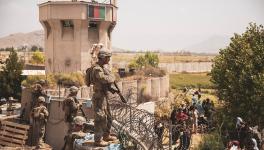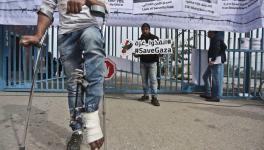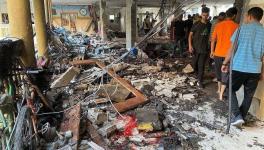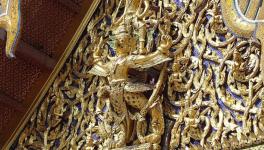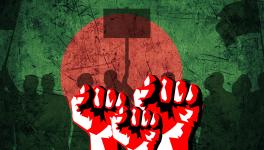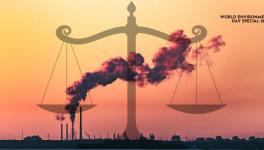How Resistance to Military Rule Changed in Myanmar Since 2021 Coup
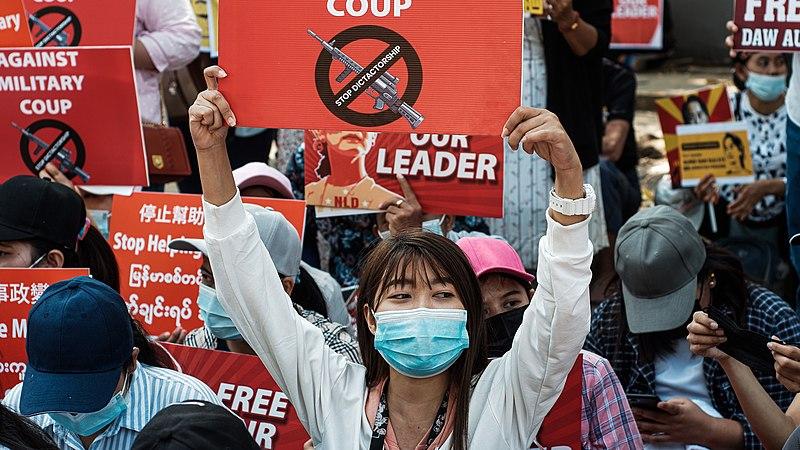
It has been over a year since the military coup in Myanmar, and, as expected, members of the international community have reacted with concern to the fast-deteriorating humanitarian and human rights situation in the country. The scenario is grim as at least 1,500 people have reportedly been killed in the year-long protests against the coup and possibly thousands more in the armed conflict. It is estimated at least 4,40,000 people have been displaced since the February 2021 coup.
With a population of nearly 54 million, Myanmar, a land in which the majority adhering to the Theravada Buddhist tradition coexists with ethnic and religious minorities, is no stranger to military rule. Except between 1948-1958 and 2010-2021, the military, known as Tatmadaw, has governed Myanmar with absolute control for 73 years of its republican journey. Now is an opportune time to make sense of the situation in Myanmar beyond the binary lens.
First, unlike the previous protests, because of the ubiquitous presence of social media, the international community is more aware of the brutal repression by the Tatmadaw. More than 40% of Myanmar’s population are internet users, so the mobilisation of the younger generation has become easier and more spontaneous. This is unlike the repression of 1988 and 2007. At least 3,000 deaths were reported in 1988. In 2007, the Myanmar state media reported that nine people had been killed, although this number was widely disputed for gross under-reporting.
This time around, many big corporates have decided to withdraw from Myanmar. These include TotalEnergies, Chevron, and other firms that were part of a joint venture operating the Yadana gas project off Myanmar’s southwestern coast. The exit of TotalEnergies and Chevron is significant as they had been in Myanmar since 1991. TotalEnergies reportedly paid more than $400 million to the Myanmar authorities in 2019 and 2020 in the form of taxes and “production rights”. Several other companies have left, including British American Tobacco, Taiwanese shipping giant Evergreen Marine and Australian energy firm Woodside. Japanese beer giant Kirin has also decided to pull out of a partnership with a conglomerate linked with Myanmar Economic Holdings overseen by military chief Min Aung Hlaing.
The exits demonstrate greater sensitivity among corporates about the assaults on democracy by the military leadership in Myanmar. In May 2012, as the international community was celebrating its incremental steps towards democracy, the United Nations introduced the concept of a Global Compact in Myanmar to sensitise the corporate world of their responsibility to protect human rights and sustainability.
Second, in 2022, the political resistance in Myanmar bears an effective political messaging for the international community as it has members who have shouldered the responsibilities of governance in the National League for Democracy (NLD)-led government from 2015 to 2021. This is demonstrated in their engagement with their international stakeholders. Many diplomats have resigned in protest and openly defied the military junta. Unlike the past, when Aung Sung Suu Kyi remained the face of the resistance, this time around, civil disobedience has reportedly escalated across Myanmar into what is essentially a civil war.
At the same time, one cannot be indifferent to the sustaining power of the military and limitations of the potency of violence as an instrument to bring down the military junta. First, in the post-1948 era, when Myanmar became independent, the military or Tatmadaw, as it is locally called, has fought internal battles with the communists, Burman nationalists and armed ethnic groups depending on the context. It has ruthlessly crushed them. Tatmadaw’s main argument remained that it is the only national institution that glues the country together, and, rather than a regular army, whose main reason to exist is the external enemy or danger, its raison d’etre had been to fight domestic battles against armed ethnic groups.
Second, the unease between the ethnic Burman majority and some of the ethnic minorities, who comprise nearly one-third of the country’s population, runs deep within the politico-socio landscape of Myanmar. Myanmar officially became a British colony in 1886 and remained part of British India till 1937. Developments during the colonial period impacted post-1948 inter-ethnic relations in post-colonial Myanmar. The areas that provided soldiers or were loyal to the British army from Myanmar were the peripheral regions, such as Kachin state and Arakan or Rakhine.
It was a similar strategy of the British as in the rest of British India. After the 1857 mutiny, in which a considerable proportion of soldiers of Hindi or Urdu-speaking Muslims and Hindus from the Gangetic plains participated, the British shifted the recruitment base to areas such as Punjab and North-West Frontier Province in the later years of the 19th century, which continued till the World War II. In Myanmar, the British had replaced the monarch from the Burman majority community. During World War II, ethnic Burmans revolted along with the Japanese against the British, while some ethnic minorities supported the British in quelling the rebellion. The post-independence history of Myanmar is inseparable from the brutal armed secessionist battles between the ethnic armed groups and Burman-dominated Tatmadaw.
Considering these facts, it is vital that various national stakeholders involved in non-violent resistance against the military rule take the issue of national reconciliation as a priority along with the struggle for democracy. This will help send a strong message throughout the country for national unity and remove the key vector that gave past legitimacy to Tatmadaw’s rule in some circles. The fact that ethnic minorities were dissatisfied with the performance of the NLD government on the issue of empowerment of ethnic minorities makes the discussions around national conciliation a political imperative.
Of course, some areas remain far from the ambit of the national conciliation process. To provide a perspective on their size, the United Wa State Army has approximately 25,000 soldiers. With co-ethnic community members present across the border in China’s Yunnan province, the area is an autonomous zone as recognised by Myanmar’s Constitution, a kind of modus vivendi. Relative peace has prevailed between the two sides due to its autonomous status.
Third, big-ticket items on the export list, including oil and gas that provide the bulk of the military’s revenue, continue to make their way to China. The ASEAN, a regional group of ten Southeast Asian countries that have released the often-quoted five-point consensus on Myanmar, has various political systems with questionable human rights and democracy records. It is improbable that some of these countries will expend their diplomatic capital on Myanmar beyond a point, as that will question their double standards domestically. The western countries, including the United States, Canada and the United Kingdom, have imposed sanctions on persons and their families connected with the military regime, including military commanders, ministers, judicial and prosecutorial officials. Some business entities have also been brought under the sanctions regime. In the past phase of military rule in Myanmar, western sanctions failed to deter the military leadership as they could economically sustain themselves by engaging with China and other countries in the global south. Russia and China, which are permanent members of the UNSC, have consistently opposed sanctions against countries in the global south.
Four, the coup on 1 February last year, when the military seized control of Myanmar, was preceded by acts of egregious human rights violation in Rakhine in 2016 and 2017. Apart from the massive displacement of Rohingyas to Bangladesh, there is reported internal displacement of over 6,00,000 stateless Rohingya in Rakhine state, including some 1,48,000 displaced in camps, villages, and displacement sites, that require humanitarian support. The situation has become even more complicated than the conflict in Rakhine, which is largely seen from the lens of the ongoing Rohingya crisis. The Arakan Army (Arakan Army recruits are Buddhists but are ethnically distinct from Burman Buddhists) renewed its fight against the Tatmadaw in 2018. Arakan Buddhists attach a special significance to 1784 when the Burmese king of the Konbaung dynasty took control of their capital, Mrauk U. The Konbaung dynasty was defeated in 1885 by the British.
The resistance movement cannot remain ambivalent to the multi-layered political challenges in Rakhine, which has human rights and humanitarian dimensions and has acquired an issue of international concern. Any fresh bout of instability and violence in Rakhine may help the military gain ground in some societal circles by stoking majoritarian nationalist impulses.
Undoubtedly, in 2022, the military is facing fierce resistance in Myanmar, and it has a more prominent inter-ethnic cooperative component compared with earlier phases of resistance. However, the structural factors that impede national unity and a collective moral force against military rule are still present. A simultaneous discussion to address the challenge of diverse regional aspirations in a comprehensive and accommodative manner and a detailed vision statement is necessary. Otherwise, the resistance will get exposed to structural vulnerabilities and weaknesses that have shaped Myanmar’s tragic political trajectory of the last seven decades.
The author was a member of the UN Secretary-General’s Good offices on Myanmar. The views are personal.
Get the latest reports & analysis with people's perspective on Protests, movements & deep analytical videos, discussions of the current affairs in your Telegram app. Subscribe to NewsClick's Telegram channel & get Real-Time updates on stories, as they get published on our website.









